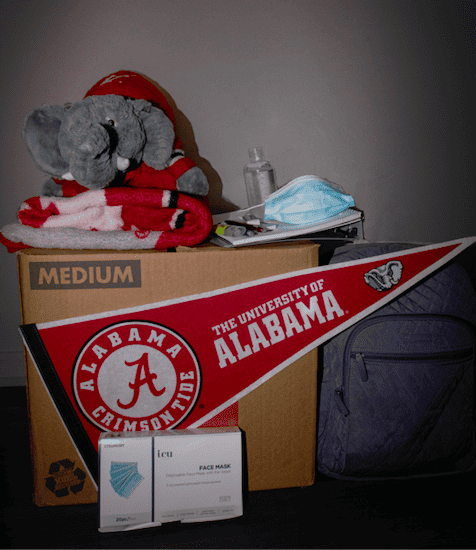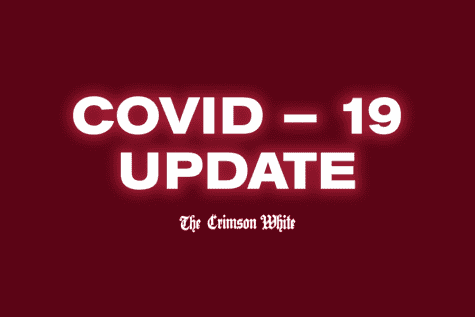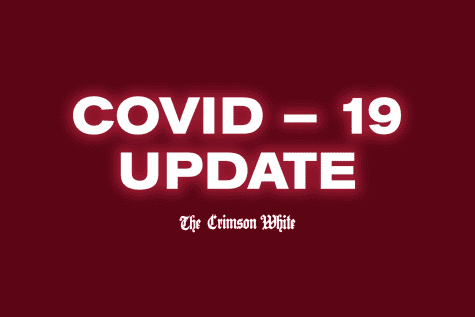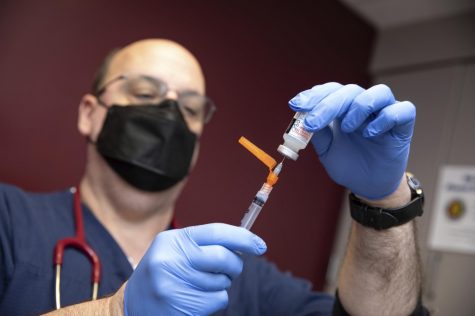Comparing notes: Here’s how UA stacks up to other campus return plans
August 5, 2020
Since the beginning of the COVID-19 outbreak, University of Alabama officials have been developing a return plan for the fall semester. But the ambiguity of certain aspects of the plan has left some students and faculty worried that the University is not fully prepared for a possible resurgence of cases.
The UA System’s campus return plan, released on June 9, is concurrent with the UA campus plan and addresses health and safety, academic life, student life, finances and resources for students. The University’s plan requires all students and faculty members to wear face coverings when inside campus buildings and maintain social distancing standards. In addition to these measures, the University has called for heightened sanitation, routine health questionnaires through the Stay Safe Together assessment tool and required isolation for those who test positive.
Other universities that are returning to on-campus instruction have adopted similar policies, but schools within the SEC have provided additional details on how they plan to keep students safe.
Mississippi State University‘s policies are similar to the University of Alabama’s but will also require faculty and staff to complete a health questionnaire every 24 hours using the app Everbridge. This is also a requirement for all residential students and is encouraged for non-residential students. They will also set up touch-free temperature check stations around campus for students.
Auburn University will supply wellness kits for students who are registered for in-person classes. These kits include a reusable face covering, hand sanitizer and a digital thermometer. The University of Alabama, while requiring face coverings, has no plans to provide them to students. Faculty and staff will receive a free mask.
The University of Georgia has ordered 150,000 face masks – enough for two masks per student and faculty member – and is distributing 60,000 digital thermometers to its faculty, staff and students. Georgia has also ordered 2.5 million sanitation wipes and 4,000 gallons of hand sanitizer which will be available for distribution in classrooms, offices and common areas across its campus.
Under the plan that the University of Alabama has in place, an individual who tests positive must isolate for a minimum of 10 days after the onset of their symptoms and for at least 72 hours after their symptoms have disappeared. Those experiencing symptoms are required to immediately isolate until they receive a negative test result; they are allowed to return to normal activities after 24 hours.
Those who test positive but are asymptomatic must isolate for 10 days and log their temperature twice a day until they receive clearance from student and employee health administrators. Those who have been in close contact with people who have tested positive are required to quarantine for 14 days. These students can return to normal activities after being cleared by the Student Health Center.
Plans such as these are common across most of these universities, but Mississippi State extends its quarantine requirement to 14 days for confirmed positives and those experiencing symptoms. This ensures a better possibility for symptoms to present themselves and for those students to recover from illness.
The University of Alabama will require a negative test result from students prior to returning in the fall. The timeline for this requirement was announced on July 17.
UA students who have to quarantine can receive meals by delivery, yet the school has not commented as to how it will safely get food to these individuals and how it will protect those delivering food. Neither are details given as to how these quarantines will be enforced either.
Schools such as Harvard, Rutgers, Princeton and Georgetown have announced that they will be largely online in the fall with the exception of a few in-person classes following the University of Southern California’s July 1 announcement. UA students have several questions about the University’s return plan.
STUDENT PERSPECTIVES
Katherine Di Valerio, a senior nursing major, had questions as to whether or not the University’s plan to quarantine people was enforceable.
“If the University is offering in-person classes and charging people for in-house lectures, they need to back up that action with guaranteed safety measures that are laid out clearly,” she said. “I believe they are doing the best they can. However, I still don’t think [the return plan will] be safe or effective.”
Madeline Beyer, a junior majoring in computer science and international studies, said she doesn’t believe that a safe return to campus is possible.
“If kids return to campus no matter how many guidelines they put into place there are going to be people who just don’t care,” she said. “The first week back everyone is going to want to see their friends they haven’t seen.”
Beyer is worried that if students return to in-person classes, one of her classmates will be careless and go partying and infect her and her other classmates due to their apathy towards the current health crisis.
“That isn’t fair to the other students and that doesn’t seem fair to the teachers,” she said.
Beyer is also concerned about moving into the dorms, as she fears her 60- and 55-year-old parents won’t be able to help her if she has to move large pieces of furniture. Beyer was also disgruntled with the University’s failure to provide masks for students. She said the decision shows that the University is “budgeting this, and they don’t really care.”
Di Valerio was also disappointed the University had no published plan to provide masks to students.
“Masks aren’t a trend, they are a mandated medical necessity,” she said.
Jackson Kerchis, an economics, finance and happiness major, believes the University can return safely to campus through data analysis and segmentation.
He says it’s easy to be critical of the University in these times, but due to the uncertainty surrounding everything he doesn’t think they’ve “done a bad job.” Kerchis said he would like to see the University “be a little more definitive and a little more decisive” in its planning process, so that students know the guidelines they will have to live by.
“Setting up policies and procedures that try to focus on helping high-risk individuals and letting students that are in good health get back into the classroom seems like it would be a pretty safe way to go,” Kerchis said.
Editor’s note: This story has been edited to reflect that the University has no published plan to provide masks for all students. Officials have since said that a plan is in the works but have not given specific details.









